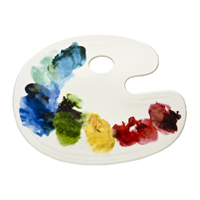
 Presenting the perfect pitch can often be a daunting prospect, particularly if you’re making the presentation in an interview scenario. Luckily, many skills that are applicable to most business scenarios, such as the ability to present information in a concise and accessible manner, can be extrapolated to making a good interview presentation. Follow these five top tips to present a perfect pitch.
Presenting the perfect pitch can often be a daunting prospect, particularly if you’re making the presentation in an interview scenario. Luckily, many skills that are applicable to most business scenarios, such as the ability to present information in a concise and accessible manner, can be extrapolated to making a good interview presentation. Follow these five top tips to present a perfect pitch.
1 – The first rule of any good presentation is good preparation, and this is even more important in an interview, as you may not know in advance the constituents of your audience. The more familiar you are with your presentation, the more professional your pitch will appear. If possible, try to learn your pitch by heart rather than referring to notes, to encourage the impression that you really know your topic well. Make sure all your equipment and materials are ready, for example that you have a sufficient number of hand-outs, and that you know in which folder your presentation file is stored. Similarly (and almost a no brainer) but make sure you look the part for your interview presentation. Professionalism is the key so make sure your attire is suitable and that your make up (if you are wearing any) is appropriate. Check out Jobacle’s post on make-up tips for job interviews.
2 – The content of your pitch is usually the most important factor to consider. Even if you present well, if the details in your presentation are incorrect or poorly conveyed, you are unlikely to be successful in persuading your audience – in this case your interviewer – to see things from your point of view. A good general rule is that a presentation should consist of three parts: an introduction, the main pitch, and a closing summary. The main pitch should account for 70-80% of your total content, none of which should be repeated. However, the strongest sections need to be the introduction and summary, as these are the parts most likely to stay in your audience’s mind. Be concise; don’t add in unnecessary detail, and limit yourself to just one example per point you make. Don’t repeat yourself – you need only make a point once – and remember to explain any specialised terms or abbreviations that might not be familiar to your interviewer.
3 – Clear delivery will help your audience to understand your pitch, and good preparation will help with this. Also remember to speak slowly, and look your interviewer in the eye, rather than studying your notes or the layout of the room. Try to stay relaxed, and, if possible, modify your behaviour to match your interviewer’s. For example, if he/she is making a lot of jokes, it’s reasonably safe for you to do the same.
4 – Whether you’re making an informal pitch to one interviewer, or a mock presentation to a room of people, visual aids can usually be helpful in illustrating your argument. However, don’t rely on them to make the point for you, and don’t add in a collection of graphs or charts just for the sake of it. If a figure doesn’t directly support your point, discard it. Be selective with your diagrams, and with text, too – a slide show should have limited text, otherwise your audience will be reading your slide instead of listening to what you are saying. A title and a couple of bullet points should be sufficient. Remember it is you making the pitch, not the computer. You should also aim to keep visual aids relatively simple; spinning text and flashing images are probably not suitable for a professional environment, and can draw attention away from the message you are trying to deliver. As with your spoken presentation, any unfamiliar terms should be explained, and all figures should be clearly labelled.
5 – Always give the opportunity for questions to be asked at the end of your pitch, and make sure you factor in sufficient time to allow for this. Your ability to answer questions will demonstrate your knowledge of your topic and the ability to think well on your feet. Listen carefully to the questions, and make sure you answer what is being asked. If you don’t know the answer, or would rather not provide it, try to put a positive spin on your reply, or maybe request that your interviewer be more specific so you can better understand what they want to know. Never try to argue with your interviewer, but if conflicts do arise, aim to settle for a compromise.
Leave a Reply